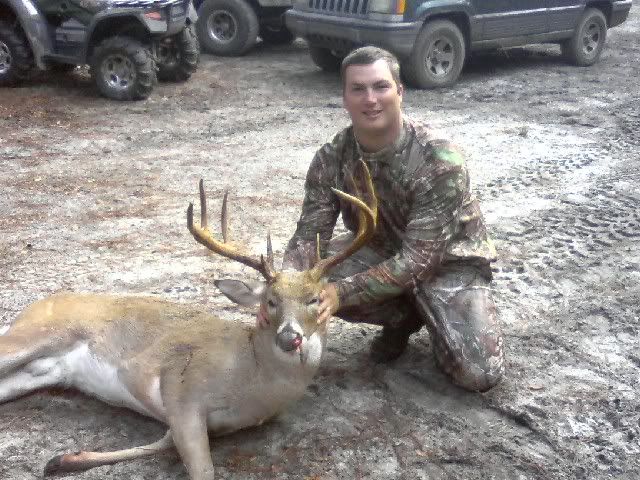Post by Deleted on Oct 21, 2010 9:52:02 GMT -5
My Father stopped by this morning bearing gifts for the boys & myself. Now let me tell ya, Me & my boys own alot of knives. I mean alot. We own SOGs, Cutcos, Kershaws, Gerbers, Colts, Ka-Bars, BenchMades, etc. But I thought it funny that we didnt own an American Classic that set the standard for todays Lock-backs. Its the Model 110 Classic Buck Knife w/ Leather Belt Sheath.

This knife is a True Country Boy Classic & Im ever grateful that my Pop stopped by with em. Im going to retire my SOG Lock-back that I carry religiously & give this American Classic a fair trial through Deer season.
Now Im sure that many of you here already own this knife, so any reviews would be great. Plus, I just like knife talk.
Buck Knives – A Brief History
Hoyt Heath Buck started out as a blacksmith’s apprentice in the early 1900’s. He devised a method for forging steel that he used to rebuild grub hoes used by the local farmers. The farmers realized that the rebuilt hoes were better than the new hoes they bought. Soon, they were asking Hoyt to forge knives for them. Hoyt worked in the logging industry, but made custom knives part time through the 1930’s.
Hoyt and Daisy Buck had a son in 1910, Alfred Charles. When Al was discharged from the U.S. Coast Guard in 1940, he moved to San Diego California. Hoyt was living in Idaho and had become an ordained minister. He still had his knife shop in the basement and made knives for the locals.
With World War II, many of the local men left for military service with their own Buck knife. In 1945, Daisy and Hoyt moved to San Diego to be with their son. Hoyt began making knives full time and Al would help out after working all day as a bus driver.
Hoyt passed on in 1949, and Al continued to make knives. In 1959, his own son, Charles joined the business. Soon after, they hired three knife makers. As business grew, a nearby forging company made the blades. The knives were stamped Buck and made at the company shop. In 1975, the 500 series of knives were produced.
The company moved to El Cajon, California in 1980, and in 2005 moved to a new facility in Post Falls, Idaho.
The 110 is a true American original. This style was first made in 1964, and showcased Buck’s breakthrough locking system.
This particular version boasts a steel clip point blade. The 110 has woodgrain handles and polished brass bolsters. The knife measures 4 7/8" long, closed and weighs 7.2 oz.

This knife is a True Country Boy Classic & Im ever grateful that my Pop stopped by with em. Im going to retire my SOG Lock-back that I carry religiously & give this American Classic a fair trial through Deer season.
Now Im sure that many of you here already own this knife, so any reviews would be great. Plus, I just like knife talk.
Buck Knives – A Brief History
Hoyt Heath Buck started out as a blacksmith’s apprentice in the early 1900’s. He devised a method for forging steel that he used to rebuild grub hoes used by the local farmers. The farmers realized that the rebuilt hoes were better than the new hoes they bought. Soon, they were asking Hoyt to forge knives for them. Hoyt worked in the logging industry, but made custom knives part time through the 1930’s.
Hoyt and Daisy Buck had a son in 1910, Alfred Charles. When Al was discharged from the U.S. Coast Guard in 1940, he moved to San Diego California. Hoyt was living in Idaho and had become an ordained minister. He still had his knife shop in the basement and made knives for the locals.
With World War II, many of the local men left for military service with their own Buck knife. In 1945, Daisy and Hoyt moved to San Diego to be with their son. Hoyt began making knives full time and Al would help out after working all day as a bus driver.
Hoyt passed on in 1949, and Al continued to make knives. In 1959, his own son, Charles joined the business. Soon after, they hired three knife makers. As business grew, a nearby forging company made the blades. The knives were stamped Buck and made at the company shop. In 1975, the 500 series of knives were produced.
The company moved to El Cajon, California in 1980, and in 2005 moved to a new facility in Post Falls, Idaho.
The 110 is a true American original. This style was first made in 1964, and showcased Buck’s breakthrough locking system.
This particular version boasts a steel clip point blade. The 110 has woodgrain handles and polished brass bolsters. The knife measures 4 7/8" long, closed and weighs 7.2 oz.








